
Pawel Gaul/iStock/Getty Images
The West African nation of Mali is famed for tie-dyed textiles and unique colors and prints used in its garments. The culture is lively, and that is reflected in the garments you see throughout the entire nation, no matter which region you are in. Although Western clothing is becoming more popular, you can still see much of the traditional dress that the Malian people pride themselves on.
Traditional Clothing

africa924/iStock/Getty Images
Silk skirts, tunics and long dresses are popular choices for Mali women, particularly the pagne, which is a wraparound skirt. Traditionally, women also wear turbans that match their dresses. The boubou, which is a full-length tunic, is a traditional men’s garment.
Diversity of Influence

Photos.com/Photos.com/Getty Images
The Republic of Mali consists of many individual tribes and ethnic groups that have developed their own colors and styles of clothing. The Tuareg tribe, for instance, specializes in making a specific indigo blue cloth that is also used for making wedding blankets.
As a result of globalization and previous colonization, Western style has also impacted Mali clothing, particularly in the cities. Many men wear Western-style pants, shirts and tunics to work, while women are in wraparound skirts and tunics, and even occasionally pants.
Religous Influences

Africanway/iStock/Getty Images
A vast majority of the Mali people is Muslim, however, they haven’t adopted the typical Muslim dress you might find in other Muslim-dominated nations. The Muslim veil or hijab is one example of this, as Mali women do not wear them. Some traditional Muslim dress rules do apply, however, such as the one regarding shorts, which are not considered decent to wear, particularly by adults.
Color

Maxym Boner/iStock/Getty Images
Vibrant color is a mainstay of the Mali wardrobe, and dressing up in costumes and jewelry is a popular activity. Colors used for clothing are typically from entirely natural dyes, which allows the craftsperson to develop his or her own specialized colors.
Mud Cloth

moodboard/moodboard/Getty Images
Mali is famous for a type of rough-cotton textile called mud cloth, which is often used to make dashikis, a colorful men's shirt. After the cloth is woven, it is hand-painted in centuries-old patterns, then dipped in dyes made from mud. After it dries, it may be dipped again in a process that may take several weeks to complete.
Related Articles

About Apache Indian Clothing

What Kind of Clothing Do Peruvians Wear?
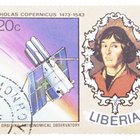
Liberian Fashions, Styles & Wedding ...

What Type of Clothes Do Mexicans Wear?
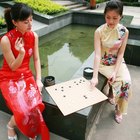
What Do Chinese Women Wear?

What Kind of Clothes Do El Salvadorans ...

Hispanic Clothing History

What Kind of Clothes Do They Wear in ...

What Types of Clothes Do They Wear in ...
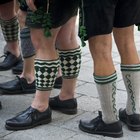
What Kind of Clothing Do People Wear in ...
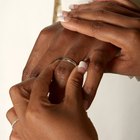
Traditional African Wedding Attire

What Are Psychedelic Clothes?
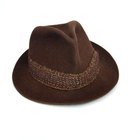
1950s Gangster Clothes

What Is the Traditional Dress Color for ...

How to Clean a Taffeta Dress

What Kinds of Clothes Do They Wear in ...

Do Muslims Wear White at a Funeral?

What Do Women Pirates Wear?

How to Dress Like a Mexican Man

How to Determine Measurements for ...
References
Writer Bio
Misty Witenberg has been a magazine and freelance writer (including "Shape," "Fit Pregnancy," "Natural Health" and "Mom & Baby") since 2004. Her experience is in fashion, beauty, travel, fitness and culture writing.
Photo Credits
Pawel Gaul/iStock/Getty Images